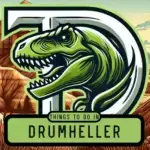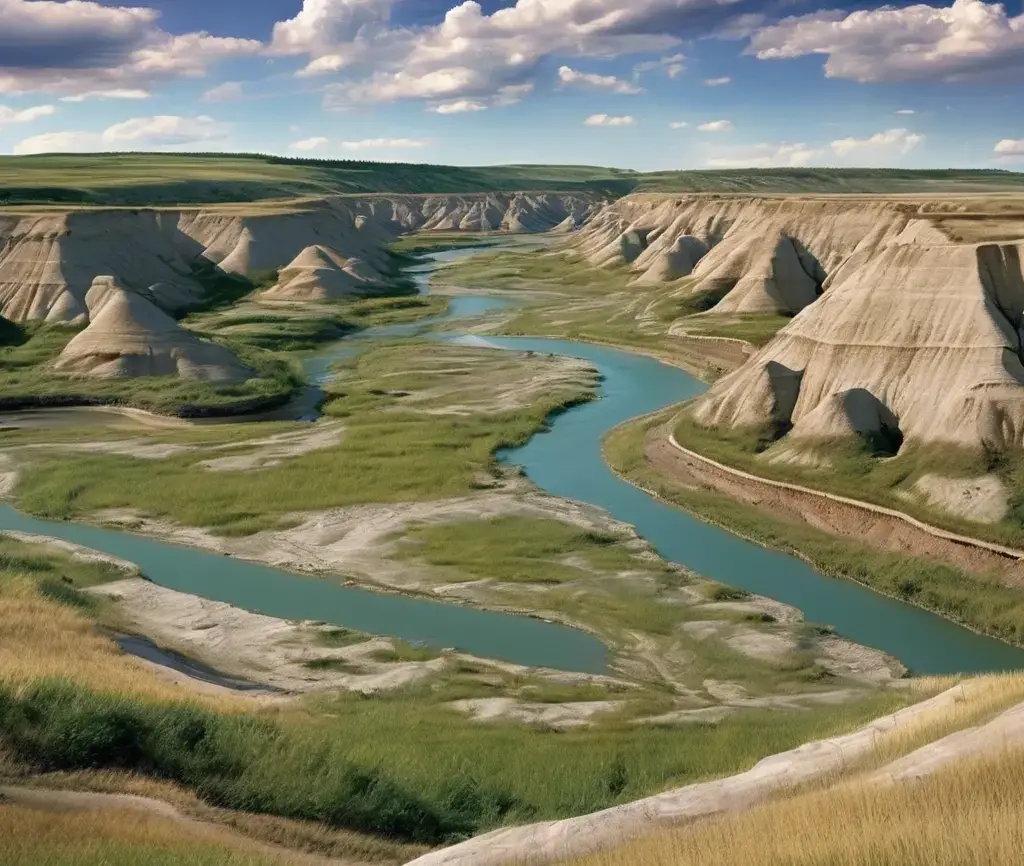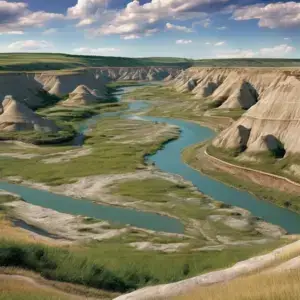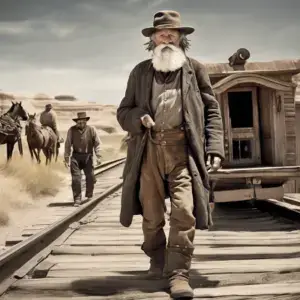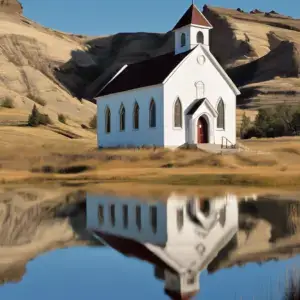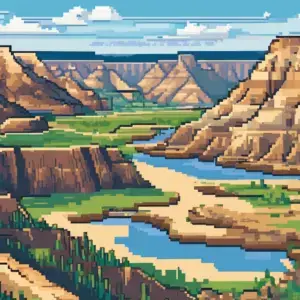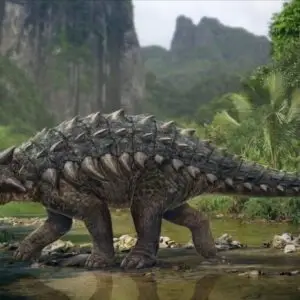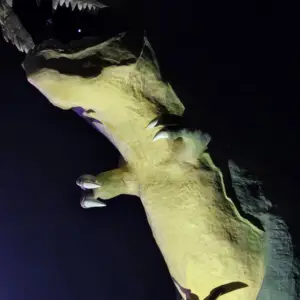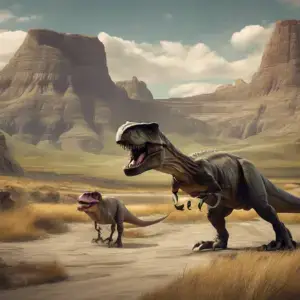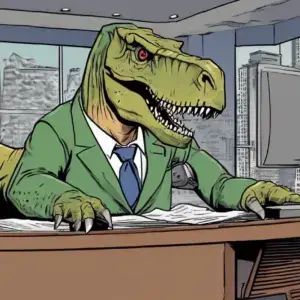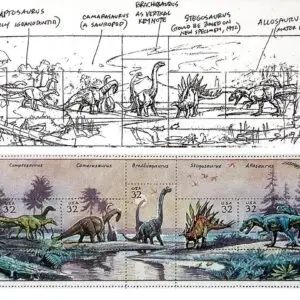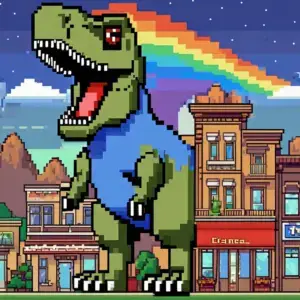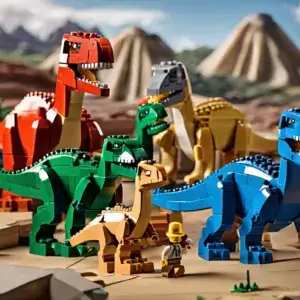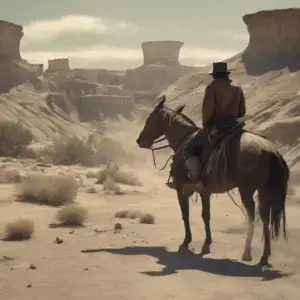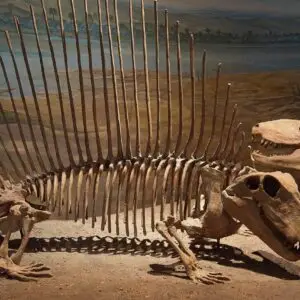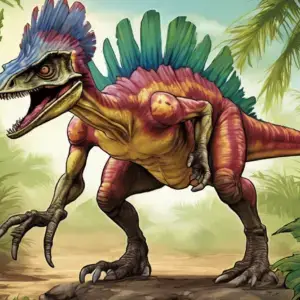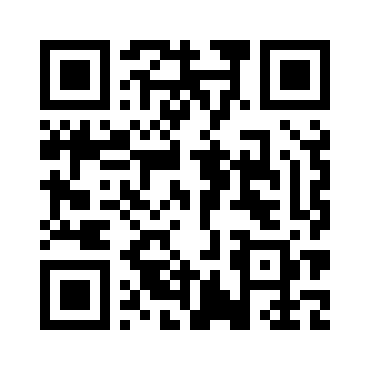Indigenous History & Culture: The First Peoples of the Badlands & Their Stories
Drumheller is located on Treaty 7 Territory, the ancestral and traditional territory of the Blackfoot Confederacy: Kainai, Piikani, and Siksika, as well as the Tsuut’ina First Nation and the Mini Thni First Nation, and on the traditional territory of the Battle River Rockyview Metis District No. 4 of Alberta. We recognize the ongoing act of reconciliation and express deep sincere gratitude to those on whose territory we reside. With respect we offer corn to the great spirit and ask his permission
Indigenous History & Culture: The First Peoples of the Badlands & Their Stories
AJ Frey
Things To Do In Drumheller
Explore the ancient stories and enduring culture of the First Peoples who shaped Drumheller’s Badlands long before the fossils took the stage.
The Red Deer River cuts through Drumheller’s Badlands like a vein of memory, carrying whispers of the First Peoples who walked these lands long before coal mines or dinosaur bones claimed the spotlight. This Alberta valley, now a fossil hunter’s paradise, was once a living canvas for Indigenous nations—Blackfoot, Cree, Stoney Nakoda, and others—who etched their stories into the coulees and plains. Picture a time 10,000 years ago, when bison roamed thick and the land thrummed with oral traditions, a history older than the hoodoos themselves. I’ve wandered these trails, felt the weight of their presence, and this exploration into the Indigenous history and culture of Drumheller’s Badlands is a tribute to those first stewards—their lives, their legacies, their stories. Let’s step back before the settlers and listen to the land’s original voice!
The First Footsteps: Who Were the Badlands’ First Peoples?
A Tapestry of Nations
Drumheller’s Badlands sit in Treaty 7 territory, signed in 1877, but the Indigenous story stretches back millennia. Picture the Blackfoot Confederacy—Siksika, Kainai, Piikani—tracking bison across these plains, their lives woven with the land’s rhythms. The Cree, pushing south from the northern forests, hunted and camped here too, while Stoney Nakoda bands roamed the foothills, their trails threading into the valley. Archaeological digs near Drumheller and Dinosaur Provincial Park—48 kilometers northeast—have coughed up spear points and campfires from 10,000 years ago, tied to Paleo-Indian hunters chasing megafauna like mammoths. These weren’t permanent towns; they were seasonal hubs—hunters following game, families gathering roots, all tied to a land they called home long before it was “Alberta.”
The Badlands as a Living Map
For these First Peoples, the Badlands weren’t just dirt and rock—they were a living map. Picture the Red Deer River as a lifeline, its banks dotted with camps where flint was knapped into tools, now scattered in the Tyrrell’s collections. Elders passed down stories of the coulees—how they hid bison herds or guided travelers—turning the landscape into a library of survival. The Blackfoot called this region “mako sica” or “bad land,” a nod to its rugged beauty, a name echoed later by French trappers. It wasn’t “bad” in a throwaway sense—it was a place of power, challenge, and life, a cultural heartbeat pulsing through generations.
Living with the Land: Culture in the Coulees
The Bison’s Gift
Bison were the Badlands’ lifeblood—imagine herds thundering across the plains, a moving feast for the First Peoples. Picture Blackfoot hunters stalking with atlatls, driving bison into natural corrals like Horseshoe Canyon’s dips, their kills feeding families for months. Bones became tools, hides turned into tipi covers, and every scrap had purpose—nothing wasted. Campsites near Drumheller, like those along the river, show butchering scars on bison bones, proof of a culture that thrived on respect for the animal. Stories say the bison’s spirit guided hunters, a bond sealed in ceremonies still echoed in Blackfoot traditions today.
Oral Traditions and the Stars
No books here—knowledge lived in voices. Picture a winter night, families huddled in a tipi near what’s now Midland Provincial Park, an Elder spinning tales of the Sky People—constellations mapping the hunt. The Blackfoot’s Napi, a trickster-creator, shaped the land in their stories, while Cree legends spoke of Wesakechak, a spirit weaving order from chaos. These weren’t just bedtime yarns—they were history, law, and cosmology, tying the First Peoples to the Badlands’ stars and stones. Artifacts like pictographs—faint on some coulee walls—hint at these tales, though time and weather have faded them. The culture wasn’t static; it flexed with the seasons, a harmony with the land that settlers later missed.
The Shift: Contact and Change
Enter the Outsiders
Fast-forward to the 1700s—Picture French fur traders paddling up the Red Deer, meeting Cree and Blackfoot with beads and guns. Early contact wasn’t all clash; trade flowed—furs for metal—but smallpox trailed behind, a silent killer slashing populations by the 1780s. The Badlands, once a bustling hunting ground, grew quieter. Then came Treaty 7 in 1877—Blackfoot, Stoney Nakoda, and Tsuut’ina chiefs like Crowfoot signing with the Crown at Blackfoot Crossing, 100 kilometers south of Drumheller. It promised peace but carved reserves, shrinking the First Peoples’ roam over the Badlands. Coal mines and settlers followed, pushing Indigenous life to the margins, though their stories clung to the coulees.
Resilience in the Shadows
The Badlands didn’t forget its First Peoples—they adapted. Picture Cree families blending traplines with wage work as coal boomed, or Blackfoot keeping ceremonies alive despite reserves. The 20th century brought residential schools—kids torn from Drumheller-area families to places like St. Paul’s, a wound still raw today. Yet, resilience shone—Elders hid languages in whispers, dances in secret. Today, Siksika Nation, 90 kilometers southeast, and Stoney Nakoda near Canmore keep Badlands ties alive, their voices reclaiming space in a valley once theirs alone. The land holds their scars and strength, a testament to survival.
Why It Matters: The Badlands’ First Soul
A Legacy Beneath the Fossils
Drumheller’s dino hype—Tyrrell, hoodoos, Tyra—sits on Indigenous bones, not just prehistoric ones. Picture this: before Edmontosaurus fossils drew crowds, Blackfoot hunters tracked real giants here. Their stories layer the Badlands like sediment—older, deeper, alive. Ignoring them flattens the valley’s soul into a tourist trap. I’ve felt it guiding folks through the coulees—the land’s not just rocks; it’s a keeper of First Peoples’ footprints. From Paleo-Indian spear points to Blackfoot bison tales, this history’s as real as the shale underfoot, a culture that shaped Drumheller before coal or dinos stole the show.
Hearing the Past Today
Want to feel it? Wander Dinosaur Provincial Park’s trails—those same paths Blackfoot scouts once tread—or sit by the Red Deer, imagining Cree canoes gliding past. The Tyrrell’s got artifacts—arrowheads, tools—whispering these stories if you listen close. Better yet, hear it from Siksika or Stoney Nakoda voices—Elders at powwows or cultural events share what books can’t. After, grab a bite at Munchie Machine—my Stegosaurus Burger’s a nod to the past, fueling your Badlands roam. This isn’t just history; it’s the valley’s first heartbeat, still thumping if you tune in.
The First Peoples didn’t just pass through Drumheller’s Badlands—they shaped it, lived it, sang it. Their stories are the valley’s roots, a culture that endures beneath the fossils and dust.
[Closing Paragraph]
As you wander through Drumheller’s wild wonders, don’t forget to dive into the local magic that keeps this town roaring! Swing by Treasure Box Toys for a playful treasure hunt—think toys, games, and pure joy for all ages. Craving a snack? Hit up the Munchie Machine for a quick, quirky bite that’s as fun as it is tasty—perfect after a Badlands roam. While you’re at it, explore Smith & Son Pawn and Loan for unique finds that tell their own stories. And for a keepsake that’s pure Badlands gold, grab a Drumheller Dinosaurs Colouring Book to colour your own prehistoric adventure. These local gems are the heartbeat of our town—support them, explore them, and let Drumheller’s spirit spark your next big discovery!
Once again Drumheller is located on Treaty 7 Territory, the ancestral and traditional territory of the Blackfoot Confederacy: Kainai, Piikani, and Siksika, as well as the Tsuut’ina First Nation and the Mini Thni First Nation, and on the traditional territory of the Battle River Rockyview Metis District No. 4 of Alberta. We recognize the ongoing act of reconciliation and express our sincere gratitude to those on whose territory we reside. Thank you to the great spirit, we offer this ceremonial tobacco to the great spirit in gratitude.
